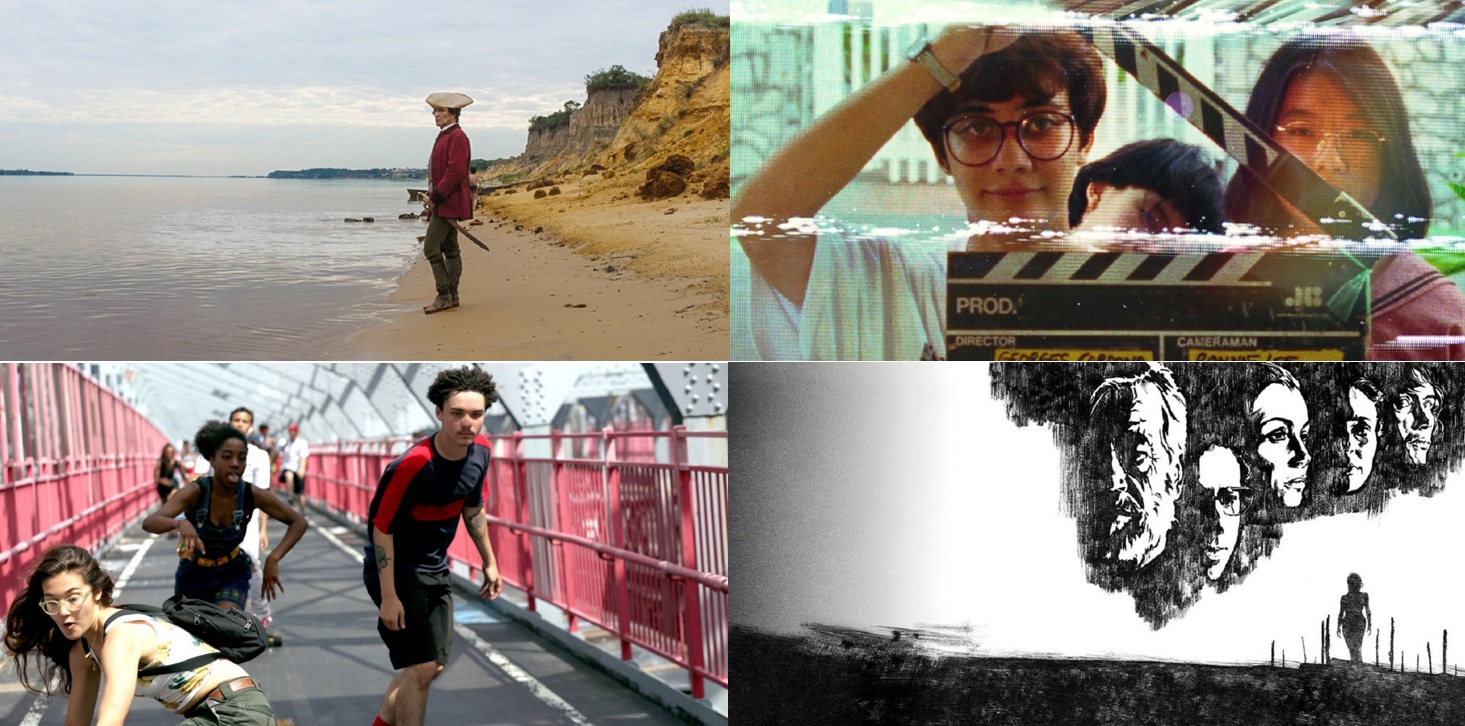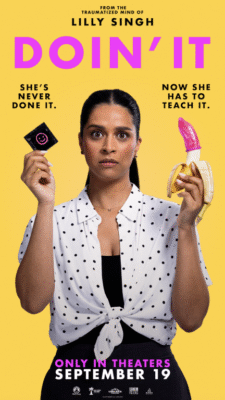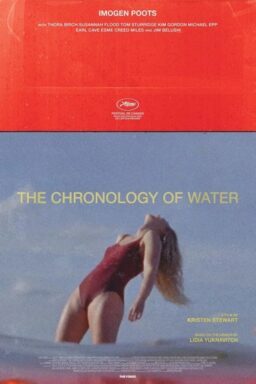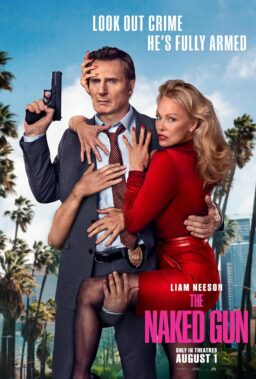10. “Sorry to Bother You” and “Jeanette: The Childhood of Joan of Arc” (Tie)
Boots Riley’s literally radical vision of the intertwining of capitalism and institutional racism was a pharmaceutical-grade stunner that exercised cinematic rights a bunch of more experienced filmmakers seem not to know even exist. Fresh, funny, and terrifyingly surprising. One relatively experienced filmmaker who strives to be ever more free with each picture is the Frenchman Bruno Dumont, who concocted a vision of divine grace being a head-banging feeling with his musical treatment of the teen years of Joan of Arc.
9. “Support the Girls”
I have been skeptical about the films of Andrew Bujalski in the past; he’s certainly a talent but I’ve sometimes had trouble clicking with his pictures for reasons I’d rather not dredge up because they seem petty, e.g., I could not stand one of the lead actors in a couple of his films. This concept proved to be not a factor with this superb drama with almost nonstop comedic elements, a bad working day (and more) in the life of Regina Hall’s Lisa, the manager of a Hooters-type Texas sports bar contending with a jailed employee, overenthusiastic newbies, an owner who’s both arrogant and negligent, a power failure, and more. In this sharply-written picture the filmmaker and cast strike a perfect balance of human empathy and formal discipline/observation. While the conclusions it makes about workaday life in America are bleak indeed, it’s an incredible pleasure to watch.
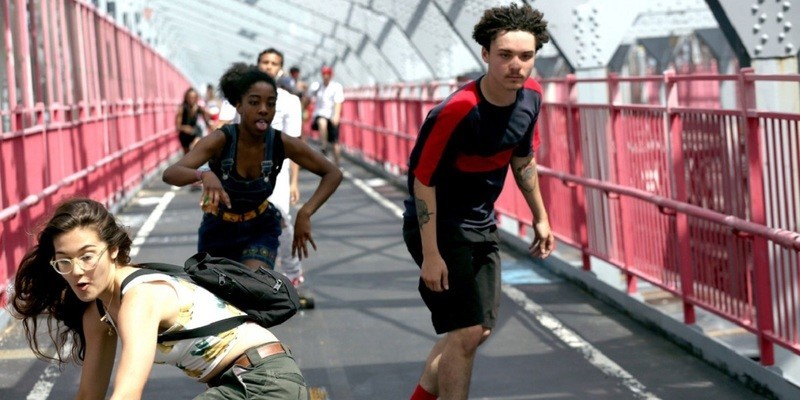
8. “Skate Kitchen”
As a critic I try to retain an open mind about what I’m asked to review, not just because it’s morally correct but because it pays off. Crystal Moselle’s film about female skateboarders, not a demographic that figures prominently in my sensibility so to speak, proved one of the most engrossing and genuinely transportive pictures I saw this year. From my review in the New York Times: “Older New Yorkers often wax nostalgic about places that were important to them and are gone, and grouse that the city doesn’t have the same ‘magic’ that it used to. This movie is a useful reminder that each subsequent generation of New York children gets the city’s magic where they find it. ‘Skate Kitchen’ is a depiction of a particular kind of hangout freedom that’s at its most beautiful when it’s nearly languid, as characters sit on tar-beach rooftops taking in the city at twilight, or navigate street corners on their boards in relaxed arcing motions. Many of its moments perfectly capture the delight and dread of a summer in the city at an age when you may think you’re invincible, in spite of all the everyday defeats life may be handing you.”
7. “Madeline’s Madeline”
It’s dangerous to glibly equate art and art-making with “madness” or any other variety of mental illness. So if I tell you that “Madeline’s Madeline,” a film directed by Josephine Decker and equally authored by the fierce lead performance of Helena Howard, is about a talented teenage actress with issues who’s possibly being exploited by her acting coach, I couldn’t blame you for thinking it sounds dicey. It is not dicey: what it is is provocative, empathetic, frightening, and most of all, free, or as free as a narrative film can be.

6. “Shirkers”
One indication of why this is a near-great film: although it is a relatively straightforward and coherent narrative account—albeit one so surprising as to be, weirdly, equally exhilarating as it is upsetting—almost everyone who watches it has a different idea of its theme. Is it about toxic males holding women down? The challenges facing a female artist? The difficulty of making art in Singapore?
Sandi Tan’s documentary memoir/detective story cannily maintains a core pose of modesty while insinuatingly exploring a series of big ideas. Serving as her own narrator, Tan tells of her 1990s time as an artistically ambitious teen in Singapore, under the spell of maverick filmmakers like David Lynch and believing she had found a cinematic partner in crime with an older man from the States, a teacher and self-styled would-be auteur named Georges Cardona. Sandi forges alliances with the smaller-than-a-handful number of like-minded conspirators on her not-yet-economically-booming island to make her film. A film that Cardona absconds with, leaving behind no explanation or apology.
The rediscovery of the footage in 2010 made this movie possible. But it didn’t determine this movie’s power. Even if it took Tan several decades to realize it, “Shirkers” proves her a born moviemaker.
5. “Hale County This Morning, This Evening”
This film, made by RaMell Ross, is cinema as an act of love, love for both a people and a place. From my review in the New York Times: “the filmmaker’s poetic logic is inextricable from his consciousness of race and community, and of his function and potential as an artist grappling with his own circumstances and those of the people he’s depicting. ‘Hale County This Morning, This Evening’ is not a long film, but it contains whole worlds.”
4. “Mandy”
“When I was a child, I spake as a child, I understood as a child, I thought as a child: but when I became a man, I put away childish things.” So said Saint Paul in his first letter to the Corinthians. The aesthetics of “Mandy” have a stubborn attachment to what many might call “childish things,” like the tropes of pulp fantasy. But Panos Cosmatos’ film drags them into a foreboding realm of art cinema. The tensions raised by this result in an extremely distinctive and haunting picture. From my review in the New York Times: “In its various genre allusions, it draws from a deep, idiosyncratic well. But despite its frequent instances of absurdist humor, it is not a film that winks at the audience with its cleverness.”

3. “The Other Side Of The Wind”
In the interviews and authorized and unauthorized recordings of conversations with Orson Welles in his later years, he is voluble, expansive, regretful, witty, pointed. But hardly ever overtly angry. (Although you get a bit of that in My Lunches With Orson, the Henry Jaglom book transcribing the chats they had.) “The Other Side of the Wind” is an angry film. Angry with Hollywood, angry with cinema, angry with cinephilia, angry with life. Not for what it gives but for what it takes away.
And it’s angry with its own maker. For squandering … something. Something the movie never quite puts its finger on. From my review on this site: “What vision it […] presents is a continually paradoxical one. It is a curse on cinema and a blessing of it. Its explorations of sexuality near explicitness, but its musings on the subject have to do with nothing but secrets. A sniping critic/historian played by Susan Strasberg harps on Hannaford’s camera fixating on his movies’ leading men. She recalls that Hannaford had affairs with all the wives of his movies’ lead males, and theorizes that this was his way of sublimating his desire for the men. Certainly Hannaford’s fixation on John Dale (Bob Random), the hippie-curled leading man of the new project, is not healthy. Dale came into Hannaford’s life while the latter was vacationing. The older man believes he saved the younger when he was trying to drown himself. A drama teacher brought to Jake’s party has a different story about Dale’s own ambition. Repressed homosexuality is not especially emphasized here as a betrayal of one’s self, but “The Other Side of the Wind” is a movie in which everyone is selling everyone out, or at least is susceptible to doing so. Its web of relationships is vertigo-inducing, and the breakneck cutting, constantly shifting film stock, and seesawing aspect ratios don’t construct the easiest through-line by which to track them.”
It’s not a friendly or easy film. But who said films need to be friendly or easy? Or that testaments had to be “relatable” or “positive?” Welles’ film is bracing testimony to the potential artistic powers of piss and vinegar.
2. “The Ballad Of Buster Scruggs”
Six stories about death and storytelling, which is a contrivance to stave off death—one that never works. As I said in my review for this site: “There’s a lot of killing in this movie, and many of those who suffer it are depicted lying down, with their eyes open, looking at the sky. In the movie’s final story, ‘The Mortal Remains,’ one of a pair of bounty hunters, played by Jonjo O’Neill, tells his fellow passengers in a stagecoach of how, after his partner (Brendan Gleeson) has “thumped” one of their victims, he enjoys looking into that man’s eyes and watching as he negotiates the border between life and death, trying to find a state to which he can be reconciled. Do any of them ‘make it?’ one of the passengers asks. ‘I don’t know,’ the bounty hunter says cheerfully. ‘I’m only watching.’”
Here, I think, is the thing that ties the movie together, makes it more than a random selection of stories. I was told, recently, in a Q&A with Ethan Coen, Bill Heck, and Tim Blake Nelson, that early in the process of the film it was thought that the Frenchman in the poker game in the title tale and the Frenchman in the stage in the finale, “The Mortal Remains,” would be played by the same actor. Scheduling made that impossible, and that’s a blessing because we get to see not only David Krumholtz AND Saul Rubinek in similar roles. On the other hand, had they been played by the same actor, Coen brothers’ diabolical structure would have been clearer.
There’s a funny irony in that the sole story in which life can be seen as even a little bit fair is witnessed only by an owl and a deer.

1. “Zama”
Lucrecia Martel’s film, nine years or so in the making, is a dark comedy on the tragedy of colonialism. Adapted from a 1950s modernist novel by Argentine writer Antonio di Benedetto, the movie skews the very notion of the historical epic from its opening moments.
As I wrote in my review for this site: “Don Diego de Zama, stands on a beach, striking, on the sand at low tide, what we can infer he considers a heroic pose. There’s nothing much actually going on; some small craft are at the beach, and nearby, there are native women participating in a casual language class. [Watching them] conversing while naked and covered in mud, he lies in some grass where he believes he can see and not be seen. Before he can get up to whatever he’s thinking of getting up to, he is indeed seen, and chased away by one of the women, who taunts him as a voyeur. The scene ends on a slapstick note.”
The formal riches of the film buttress the droll but also ideologically pertinent content; the painstaking acuity of Martel’s eye and ear produce a cinematic experience that can be—inadequately!—described in words but demands to be seen.

